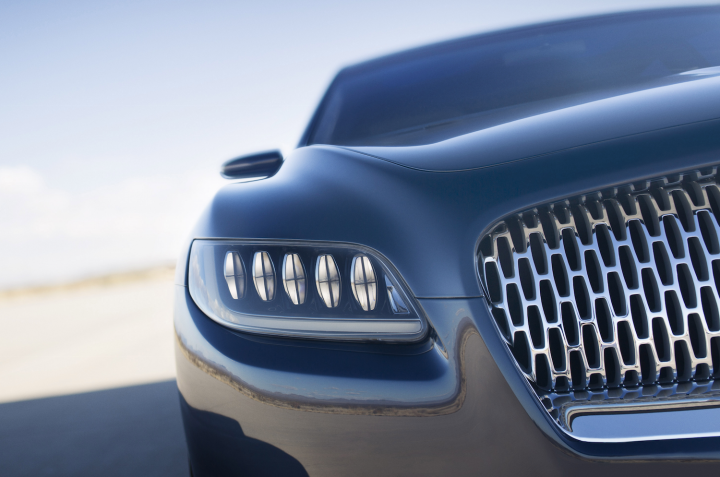If you thought Lincoln Motor Company made cars exclusively for real estate agents and Matthew McConaughey, you were very wrong. It has just unveiled a hulking new Continental Concept, which will pave the way for future tarmac terrors (not a spelling error) in the years to come.
Lincoln says the new full-size sedan signals what’s coming from the brand next year. It also boasts that the car has meticulous craftsman ship and, importantly, technology at its core.
What kind of tech you ask? Well, let’s start on the outside where the Continental shines bright with LED matrix headlamps with laser-assisted high beams and light-through-chrome (whatever that is) tail lamps.
Whether the American brand will be able to actually utilize those lighting technologies on its production cars is unclear. Audi has famously championed matrix and laser headlights but has not been allowed to bring such technologies to the States due to antiquated federal regulations.
While we’re on the outside, let’s talk about it. I think – slathered in Rhapsody Blue metallic paint — the nise looks Jaguar, grille looks old Infiniti, the quarter panels and sideline look Chrysler 300 and the back-end is all Audi Prologue. These aren’t bad things, but it’s clear this is not a wholly original look for Lincoln.
Lincoln focuses heavily on its 30-way adjustable seats, which feature Alcantara inserts. Not that impressive. What’s is impressive, however, the passenger rear seat can fully recline, after the front passenger seat is moved with the touch of a single button. This tells me this car is intended for Chinese glitterati, who likely have more reason to sleep in their country’s horrific traffic jams.
The dash-mounted MyLincoln Touch screen, as one might expect, controls infotainment.
If you’re what powers this large and long Lincoln, I have some awkward news … it’s not a twin-turbo V8, like you might hope. It’s a Lincoln-exclusive 3.0-liter Ecoboost V6, which sends powers to the car’s 21-inch wheels.
If we can draw more information out of Lincoln next week at the car’s official unveiling at the 2015 New York Auto Show, we’ll be sure to bring it to you then, so check back later next week.





